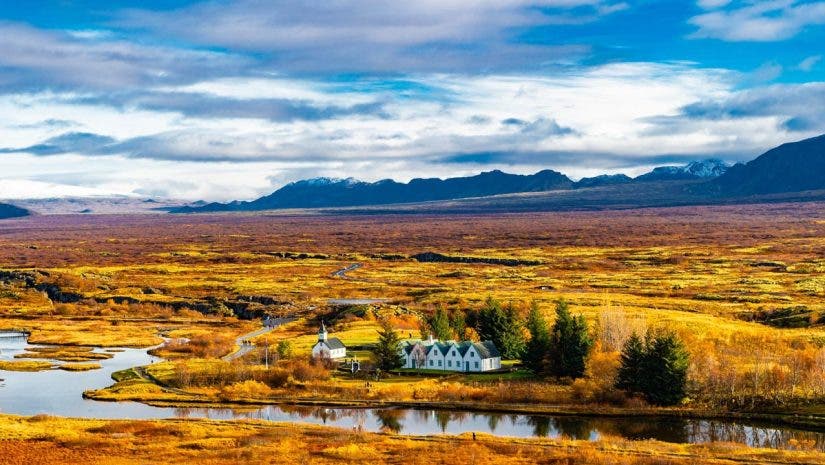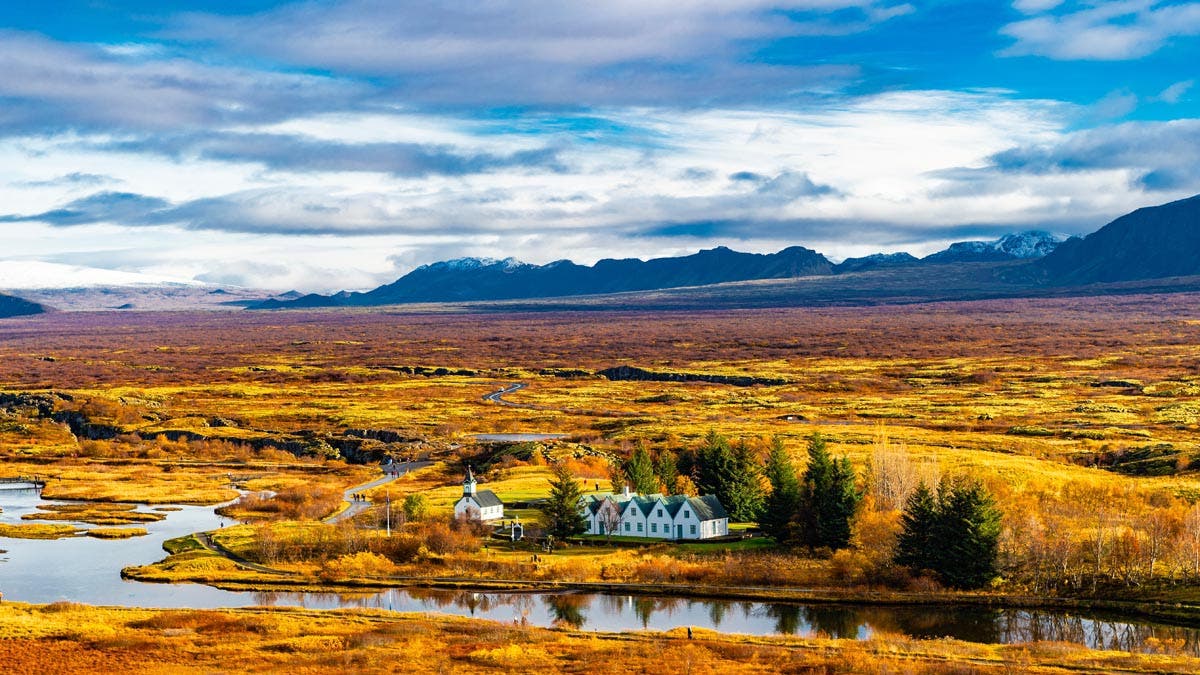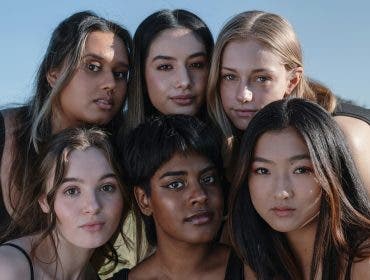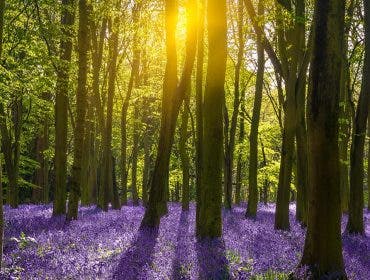Ah, the beauty of majestic mountains, rivers, lakes, and other natural wonders. Like any other photography niche, the success of landscape photography is greatly affected by the lens you use. Thus, you should put much thought into choosing the best lens for landscape photography.
What are the Best Lenses for Landscape Photography?
There are several schools of thought on what focal length is best for landscape photography. As each photographer has a unique style, and each landscape presents its own challenges, having some options is a good idea. As such, we will cover standard, wide-angle, ultra-wide-angle, and even telephoto focal lengths in this article. Each section will explain why you may choose this lens type, followed by a few of our favorites.
Finally, we will talk generally about what makes a great landscape photography lens.
Standard Lens
Also known as a “normal lens,” a standard lens has a field of view similar to that of the human eye. Have you ever tried shooting with a smartphone only to be surprised at how far away the scenery appears in the photo? How do photographers with mirrorless and DSLR cameras achieve shots close to how the human eye sees them? Easy—they use a standard lens.
Typically, standard lenses have a focal length of somewhere between 35mm and 55mm. Many kit lenses that come with cameras contain this standard lens focal length range.
If you want to try out a fixed-focal-length standard lens, a 50mm lens is a sweet spot option for a landscape lens with a generally affordable price tag. If you want more flexibility, a zoom lens will work fine if it includes focal lengths in the 35-55mm range.
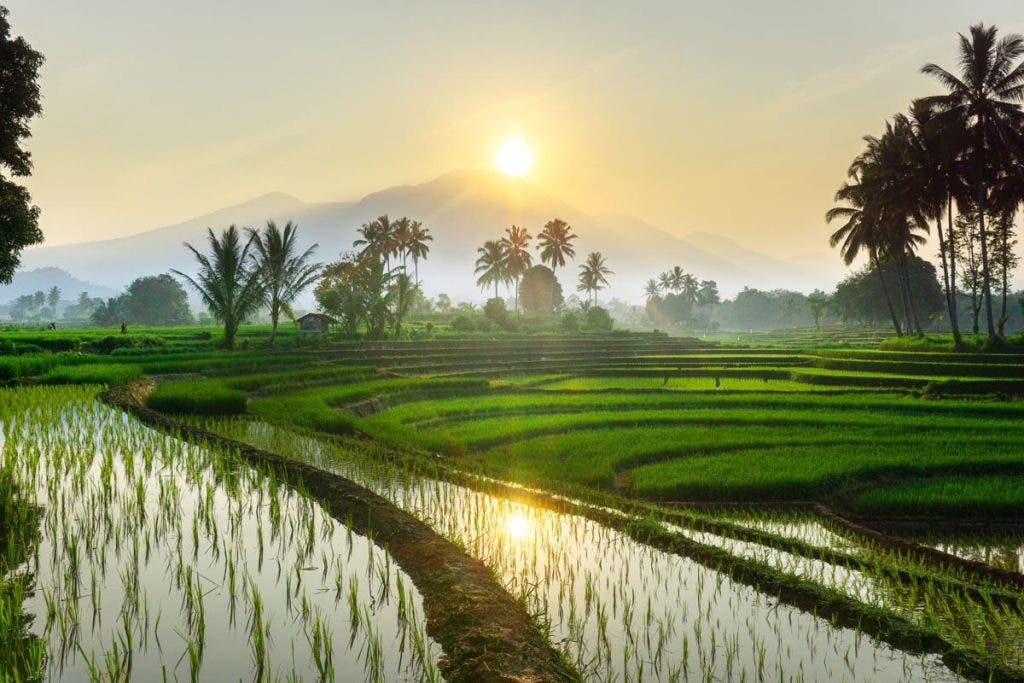
Sony FE 50mm f/1.8 Lens for Sony E
Sony FE 50mm f/1.8 Lens for Sony E Key Features:
- Lightweight 50mm f/1.8 prime lens for Sony E-mount cameras and Handycams
- Wide aperture for superior low-light photography and smooth bokeh effects
- Quiet autofocus motor suitable for high-quality video recording
- Advanced optical design reduces aberrations for sharp, clear images
- Durable construction with solid metal mount for everyday use
Canon RF 50mm f/1.2L USM Lens
Canon RF 50mm f/1.2L USM Lens Key Features:
- High-performance prime lens, ideal for portraiture, street, and fine art photography
- Large maximum aperture of f/1.2 for superior low-light performance and stunning bokeh effects
- Ring-type USM AF system for fast, ultra-precise focusing
- Tactile control ring for seamless adjustment of exposure settings
- Innovative RF lens mount design for enhanced optical performance
Nikon NIKKOR Z 24-70mm f/2.8 S Lens
Nikon 24-70mm f/2.8 S NIKKOR Z Lens Key Features:
- Wide-angle to medium telephoto zoom flexibility for use as a landscape lens
- Advanced optics for outstanding photo integrity
- f/2.8 fixed aperture for consistent exposure across the entire zoom range
- Rugged construction for high-grade protection against dust and moisture
- Dual Detect 5 Axis VR image stabilization
- Customizable control ring
Wide-Angle Lens
Many people prefer the wide-angle lens for shooting landscapes. And how could they not? It allows fitting a larger part of the scene into a frame, so there’s no need to think of ways to strategically crop your photo when shooting a place that’s wider than the average, such as the Angkor Wat temple in Cambodia.

A wide-angle lens is traditionally considered a lens with a focal length of 35mm or shorter. For many landscape photographers, a wide-angle lens is often the best lens for landscape photography.
Sigma 35mm f/1.4 DG HSM ART Lens
Sigma 35mm f/1.4 DG HSM ART’s Key Features:
- 35mm fixed focal length and Sigma’s trademark technologies help the lens enhance one’s creativity
- Hypersonic Motor enables quiet and accurate autofocus at high speed
- f/1.4 maximum aperture is ideal for low-light shooting
- FLD and SLD elements help produce less color fringing and chromatic aberrations, resulting in clearer images with more accurate colors.
Canon RF 15-35mm f/2.8 L IS USM Lens
Canon RF 15-35mm f/2.8 L IS USM Key Features:
- Bright f/2.8 maximum aperture and 15-35mm focal length for versatile shooting
- Features Canon’s Nano USM technology for quiet and smooth focusing
- Offers up to 5 stops* of shake correction for clear shots in various lighting conditions
- Minimum focusing distance of 0.92 ft./0.28 m for creative close-up shots
- Special Features: Image Stabilization, Weather Resistant
Nikon NIKKOR Z 24mm f/1.8 S Lens
Nikon NIKKOR Z 24mm f/1.8 S Lens Key Features:
- Wide-angle prime lens optimized for the Nikon Z mount’s light-gathering capabilities
- Multi-focusing system for fast, accurate autofocusing and reduced aberrations
- Extra-low Dispersion (ED) element and Nano Crystal Coat for superior optical performance
- Extensively sealed lens for dust and moisture resistance, enhancing durability
- In-camera image stabilization system for steady shots and smooth video recording
Ultra-Wide
As you explore wide-angle lens options, remember that the greater the field of view, the more distortion you’ll see in your images. At 24mm, distortion is minimal, but with focal lengths like 18mm, 14mm, or even 10mm, the corners of your images will appear distorted.
Tamron 11-20mm f/2.8 Di III-A RXD Lens for Canon RF
Tamron 11-20mm f/2.8 Di III-A RXD Key Features:
- Compact, lightweight F2.8 ultra wide-angle zoom lens for APS-C mirrorless invites new experiences
- Capture Dynamic Images with a Fast-Aperture Ultra Wide-Angle Zoom Lens
- A design so compact and lightweight, it’s hard to believe it’s an ultra wide-angle lens
- Indulge in the exciting world of wide-angle macro with an MOD of 5.9″
- Built with Mirrorless in Mind
Telephoto Lens
More commonly used in sports photography, the telephoto lens is great for zooming in on a certain element in your landscape shot (like maybe a house upon a hill) while still bringing out all the details.
You may not immediately consider using a telephoto lens for landscape photos. But telephoto lenses make great additions to any landscape photographer’s kit.
Telephoto lenses have a longer focal length than standard lenses. They generally fall in the range of 70-200mm. Telephoto lenses can be zoom lenses or prime lenses as long as they fall within that focal range. Lenses with a focal length beyond 300mm are considered super telephoto lenses.
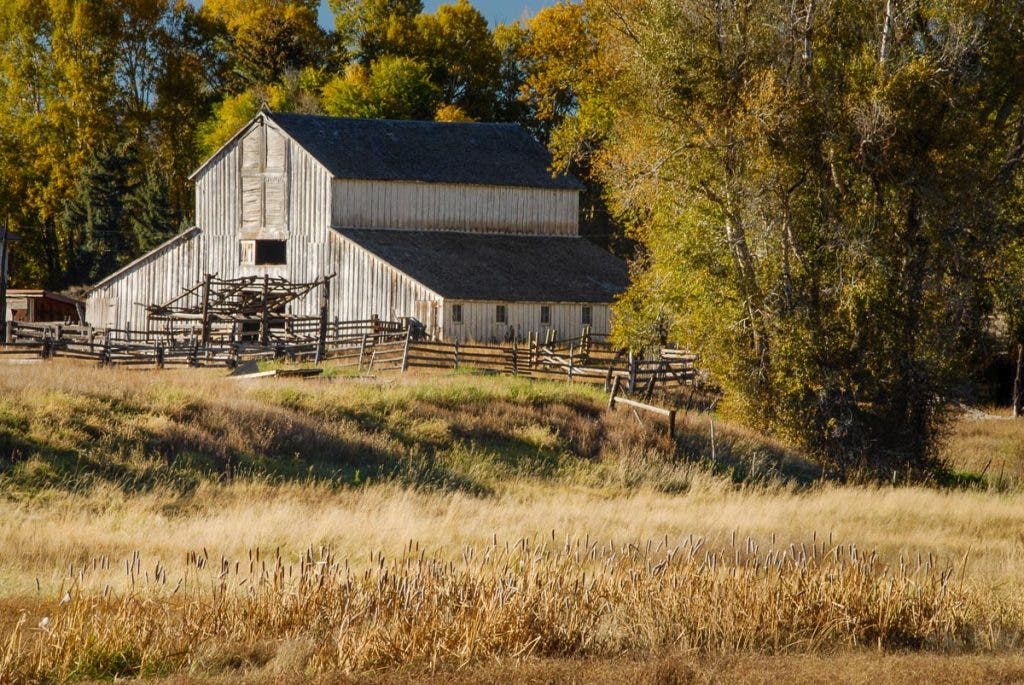
When you’re out shooting landscape photos and looking for a bit more impact in your images of distant vistas, a telephoto lens can make all the difference.
Tamron 70-300mm f/4.5-6.3 Di III RXD Lens for Sony E
Tamron 70-300mm f/4.5-6.3 Di III RXD Lens:
- In-camera lens correction (shading, chromatic aberration, distortion)
- Fast Hybrid AF and Eye AF
- Weighs only 19.2 oz.
- 15 elements in 10 groups with an appropriate arrangement of LD lens elements
Canon RF 70-200mm f/2.8 L IS USM Lens
Canon RF 70-200mm f/2.8 L IS USM Lens Key Features:
- High Image Quality and Bright f/2.8 Aperture Telephoto Zoom RF L Lens.
- Compact and Lightweight.
- Optical Image Stabilization with up to 5 Stops* of Shake Correction.
- High Speed, Smooth and Quiet Auto Focus with Dual Nano USM.
- Minimum Focusing Distance of 2.3 ft./0.7m.
What Makes a Great Landscape Photography Lens?
Choosing the best lenses for landscape photography doesn’t have to be complicated. With the list above as your guide, assess your shooting needs and pick a lens that best fits your criteria. Soon, the world will be admiring your awe-inspiring landscape shots.
Focal Length
How important is focal length for landscape photographers? The short answer is: very.
Imagine viewing a massive vista with only a 300mm telephoto lens to capture it. Unless you plan to stitch together a panorama, a 300mm lens isn’t ideal for that landscape. Now imagine that same vista captured with a 10mm ultra-wide lens. You can include the whole scene when working with such a broad, wide-angle lens, but you’ll also have plenty of distortion and perhaps miss out on some fantastic details.
Maybe the ideal lens in this case is a 50mm or a 35mm. Because no two landscapes offer the same visual features and challenges, landscape photographers need the flexibility of working with multiple focal lengths.
Aperture
When the goal is taking great landscape photos, fast, wide apertures are far less important than in other photography genres. Because most landscape photographers value a large depth of field, landscape photos are often best shot in the aperture range of f/11-f/22.
Fortunately, all lenses — from kit standard lenses to ultra-wide lenses to telephoto lenses — can shoot in that narrower aperture range. Whichever type of lens you select for your landscape photos, you can easily capture the full depth of the scene in beautiful detail.
Keep in mind, though, that a lens is typically not at its sharpest when fully closed down, so look for lenses that can stop down to f/32 if you plan on working with extremely deep depth of field. This will allow you to shoot f/22 and maintain maximum sharpness.
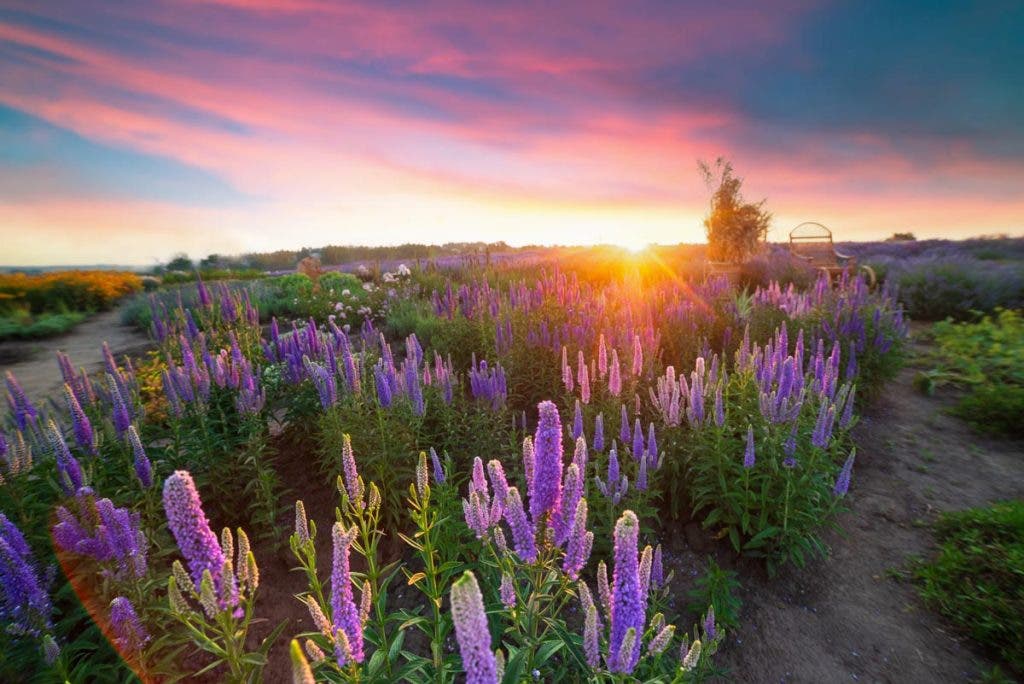
Zoom vs Prime
In landscape photography, the question of zoom lenses vs. prime lenses comes down to preference. Many landscape photographers prefer the flexibility and reduced kit size of zoom landscape lenses. Zoom lenses can shoot at a variety of focal lengths without swapping them out or carrying extra gear. Other landscape photographers value the visual quality of a fixed focal length lens.
While a prime lens is a versatile choice for experienced landscape photographers who know exactly what they want when they approach a scene, zoom lenses are helpful for beginner landscape photographers. For them, the extra flexibility of zoom lenses makes them a must-have piece of gear in your arsenal of camera lenses.
Weather Resistance
When searching for the best lens for landscape photography, weather resistance is one of the most important factors. Serious landscape photographers know sunny days are rarely photogenic. So — if you plan to shoot in rain, snow, wind, or any other condition mother nature sends your way, a weather-resistant lens is worth the added cost.
When the skies cloud over and the conditions are tumultuous and beautiful, you’ll find that weatherproof lenses are your favorite camera lenses. They take the worry out of your shoot and let you focus instead on composition and technique.
A Lens for Every Landscape
When choosing the best lens for landscape photography, we must understand that every landscape and every photographer is different. The guide above should help you determine which lens will work best for your vision and locations. Ideally, you should take the time to try a few different lenses before settling on the “best for you.”
Updated by Daniel Norton January 2025
